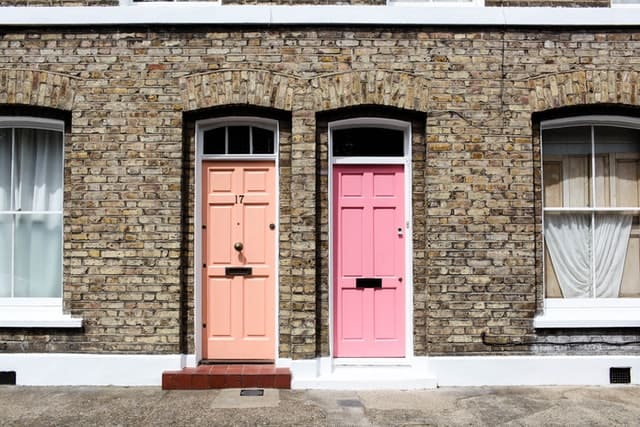
How to Cure Condensation Damp
How to Cure Condensation Damp Problems
Damp is a common issue in UK homes due to the high amounts of wet weather that we get throughout the year. However, condensation is another common cause of damp that comes from the activities that we do throughout the home. Daily activities that we all do like cooking, washing and drying clothes, bathing and showering, using the kettle and even breathing in the house will cause warm and moist air, which condensates when it comes into contact with the colder surfaces of the internal walls, eventually leading to condensation which can cause damp over time. While there is no way of getting away from doing the activities that we do at home which lead to condensation, the good news is that there are several things that you can do to minimise the condensation that you produce at home and deal with condensation damp on your internal walls.
How to Tell the Difference Between Damp and Condensation?
Knowing whether there is condensation on your walls or if it has led to the more serious issue of damp is important in making sure that you know how to approach and repair the problem. Condensation is commonly characterised by wet patches on the wall that might appear when you are taking part in an activity like showering or cooking that will generate a lot of moist air. In general, this will not mark the wall and you may be able to wipe the moisture away with a dry cloth or towel. On the other hand, condensation that has caused damp in the internal walls will not be as easy to clean away. Damp occurs when the moisture has penetrated deeper into the brick leaving discoloured patches. You may also notice signs like flaking paint or peeling wallpaper in the affected area. In some cases, the damp patches might become black or brown in colour.
How to Deal with Damp and Condensation?
Since it’s impossible to live at home without doing many of the things that can lead to condensation damp like cooking your meals or taking a shower, the key is to make sure that you have strategies in place to prevent condensation damp from occurring on your internal walls. Keeping the rooms well-ventilated is an important step in preventing any damp from forming due to condensation on the walls. This is especially important in high-moisture areas of the home like the kitchen or bathroom, where you should always use an extractor fan or open the window when you are doing something that generates moisture. You may also want to use a dehumidifier in any rooms where you have noticed condensation forming on the walls to prevent this from continuing and developing into damp.
How to Cure Damp Caused by Condensation?
It’s important to deal with any damp that has already been caused by condensation in the home. Check the walls for any signs of damp and anything potentially more serious such as mould. If mould has developed, you can clean this using a specially designed mould cleaner that will kill the mould spores and prevent it from developing further. You can then treat the internal walls with a damp proofing paint or undercoat before decorating in order to ensure that the walls are more moisture resistant. If you have found damp on the walls in a room in your home that has higher levels of moisture compared to the others, such as the kitchen or bathroom, consider using a specially designed bathroom or kitchen paint to decorate with since these paints are moisture-resistant and more likely to repel moisture on the walls caused by condensation.
How to Cure Condensation Damp – Drying the Walls
Before you can treat your internal walls with damp proofing paint and redecorate, you will need to make sure that the walls are completely dried out. To do this, you can make sure that the room is well-ventilated by opening the windows and using a dehumidifier or extractor fan on high. You may need to wait for at least a few days for the walls to be completely dried out before you can start redecorating them. Bear in mind that if you have used a mould treatment solution on your walls beforehand, you may need to wait longer for this to begin working effectively and completely dry out before you can start making any improvements.
How to Deal with Condensation Damp – Prevention in Future
Once you have treated the walls and redecorated to get rid of the unsightly appearance of damp, there are several things that you can do to prevent it from reoccurring in the future. One of the most important things to do when preventing condensation damp is keep the room well-ventilated. This will ensure that the moist and warm air has somewhere else to go rather than to the colder surfaces of the internal walls. You can do this by always using an extractor fan in the room whenever you are going to be doing any activities that will create a lot of moisture, such as cooking or taking a shower.
How to Stop Condensation Damp – Strategies You Can Take at Home
There are several things that you can add to your daily routine in order to prevent condensation and damp from occurring in your home. It’s important to be aware of the activities that you perform which generate moisture and therefore are risking condensation and damp occurring. Some of the main things that you can do at home to stop condensation damp include:
Use an Extractor Fan:
When cooking in the kitchen or using the bath or shower in your bathroom, always make sure that your extractor fan is turned on. The extractor fan is designed to direct the moist air towards the fan and away from the walls, extracting the moisture from it and preventing it from coming into contact with the walls where it will form condensation.
Open a Window:
If you don’t have an extractor fan or your is currently broken, you can get around the issue by opening a window or an external door whenever you are bathing, showering, or cooking. While this might be colder than simply turning on the extractor fan, it’s worth the effort since it provides a colder area than the external walls for the warm air to be directed to, taking it outside of the house and away from areas that would see condensation form.
Use a Dehumidifier:
A dehumidifier works by removing the excess moisture from the air in your home and preventing it from settling and turning into condensation on the internal walls. You can use a dehumidifier in any room and the majority of models run quietly and are barely noticeable in the home.
Avoid Drying Clothing Indoors:
While it might be necessary for you to use a clothes drying rack or similar to dry your clothes if you don’t have a tumble dryer at home, bear in mind that this can lead to a lot of moisture and in turn, condensation and damp. Drying your clothes on the radiators might seem like an easy option, but beware of the amount of condensation that it can create. Wherever possible, dry your clothes on a line outside. If you cannot do this due to weather or a lack of space, put your wet clothes in the bathroom to dry and make sure that the extractor fan is on or the window is open for additional ventilation.
Check Your Appliances:
Appliances like your washing machine, tumble dryer, and even the dishwasher can all get very hot when they run, which can lead to generating warm air and eventually causing condensation and damp on the walls. Most appliances are designed to create as little condensation as possible in the home; however, this will only be possible if they are in good working order. That’s why it’s important to always check the filters on a regular basis to make sure that they are clean, especially in the case of condenser dryers.
Use Moisture-Resistant Paint:
If you are decorating high-moisture areas of the home like the kitchen or bathroom, it’s a wise idea to use a specially formulated paint that is designed to repel moisture and prevent damp from developing. Not only is this type of paint less likely to crack and warp over time due to the high amount of moisture in these rooms, but more often than not it is also easy to clean by simply wiping it down, which makes it ideal for these busy and high use areas. Most good paint brands today offer durable, kitchen or bathroom paint that is moisture-repellent in a range of different colours to suit your home décor.
Damp is a common issue in UK homes, but did you know that it can often be caused by the activities that you do at home? To stop condensation from becoming an issue that turns into damp and mould in your home, keep these tips in mind.

